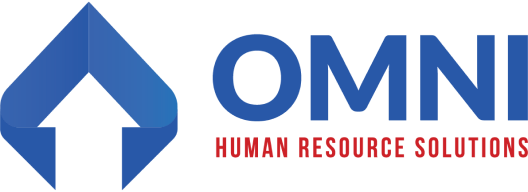In today’s hiring landscape, salary alone won’t close the deal. Candidates—especially those with in-demand skill sets—are weighing much more than compensation when making a career move. They’re asking: What kind of support will I have here? Will I be able to grow my career without sacrificing my wellbeing? Does this organization see me as a whole person, not just a job title?
The answers lie in your benefits.
For small to mid-sized organizations competing for top-tier talent, offering the right mix of benefits—aligned with both market expectations and your unique culture—can be the key to standing out. And it’s not just about ticking the right boxes. It’s about communicating your offerings in a way that resonates with what candidates value most.
Here’s how to approach benefits as a strategic recruitment advantage:
Offer Benefits That Meet—and Beat—Industry Standards
The most successful employers don’t wait until the offer stage to align on benefits—they do the research upfront. Understanding what’s standard for your industry, geography, and role type allows you to build packages that are both competitive and sustainable.
For example, healthcare and manufacturing candidates may prioritize robust health coverage and retirement plans, while professionals in education or mission-driven nonprofits may place greater emphasis on time off and long-term stability. In today’s market, falling short on benefits expectations can be a deal-breaker, especially when competitors are openly sharing their offerings in job postings and recruitment messaging.
Ask yourself:
- Are your medical, dental, and vision plans in line with peer organizations?
- Do your retirement and paid time off policies reflect evolving workforce expectations?
- Are you transparent about benefits in job postings and interviews?
When your benefits lag behind, so does your ability to attract and retain top performers. But when you lead with what candidates care about, you build credibility and interest before you even make the offer. For insights on building a competitive strategy that addresses both compensation and benefits, check out our blog on building a strong Total Rewards strategy.
Go Beyond the Basics: Highlight Nontraditional Benefits
While core benefits matter, they’re no longer enough on their own. Candidates are looking for signs that you understand what it means to support employees holistically—both at work and beyond it.
This is where nontraditional benefits can make all the difference.
Consider showcasing:
- Flexible scheduling or remote work options
- Wellbeing programs that support physical, mental, and emotional health
- Paid volunteer time or service days
- Pet insurance, legal aid, or identity protection
- Professional development stipends or tuition reimbursement
Even small enhancements to your benefits portfolio can signal a big message: We value our people and invest in their lives.
Let’s say you’re a financial services firm competing for mid-level analysts. Offering access to financial wellness coaching might not cost much, but it demonstrates alignment with your industry’s core values. Similarly, a nonprofit adding four hours a month of paid volunteer time reinforces its mission in a tangible way for employees.
These kinds of benefits may not show up on every compensation summary—but they’re increasingly influencing decision-making.
Use Recruitment Messaging to Tell the Whole Story
It’s not enough to have great benefits—you also need to communicate them effectively. Too often, employers wait until the final offer to walk candidates through their benefits package. By then, you’ve likely missed several earlier opportunities to highlight what sets your organization apart.
Instead, weave your benefits story into every stage of recruitment:
- In job postings, include a short, bulleted list or summary of standout offerings.
- During interviews, invite candidates to ask about work-life balance or professional development.
- On your website and careers page, create a clear, candidate-friendly summary of benefits.
- On social media, feature real employee experiences related to flexible work, wellness, or career growth.
This isn’t about flash—it’s about clarity. A strong benefits narrative helps candidates see themselves thriving in your organization. Explore how aligning your benefits package with organizational values can strengthen recruitment efforts in our blog on the strategic role of employee benefits.
One example: A growing manufacturing company wants to attract skilled technicians in a tight labor market. They already offer strong healthcare and 401(k) plans, but that’s not making them stand out. By revamping their messaging to spotlight their new 4-day work week option, apprenticeship pathways, and employee-led safety committees, they can spark candidate interest and raise the quality of the candidate pool.
Benefits as a Reflection of Culture
Your benefits strategy should reflect your culture just as much as your policies do. Candidates are quick to notice when messaging feels inconsistent with what employees say about working for you.
If you emphasize collaboration and employee wellbeing, but don’t offer flexible work or mental health resources, that disconnect will show. But when your benefits align with your values—whether it’s innovation, inclusion, or community—you build trust.
Recruitment is ultimately about alignment. When your benefits support the people you’re trying to attract and the mission you’re working toward, candidates take notice. Similarly, understanding the difference between employee recognition and appreciation is key to building that alignment. Learn how these factors contribute to strengthening your culture and employee retention in our blog on employee recognition and appreciation.
Final Thoughts
For small to midsize employers, the ability to craft and communicate a compelling benefits story is a critical differentiator in the talent marketplace.
Whether you’re adjusting existing offerings or launching something new, your success depends on how well you align your benefits with the expectations, values, and lifestyles of today’s workforce.
Let OMNI craft benefits-focused recruitment campaigns that attract top-tier talent. Leverage OMNI’s expertise to design benefits-driven recruitment strategies that reflect your culture and meet market demands.
Reach out today to learn how we can help you turn your benefits into a magnet for the talent you need most.

Authored by: Vice President of Executive Search, OMNI Human Resource Solutions

